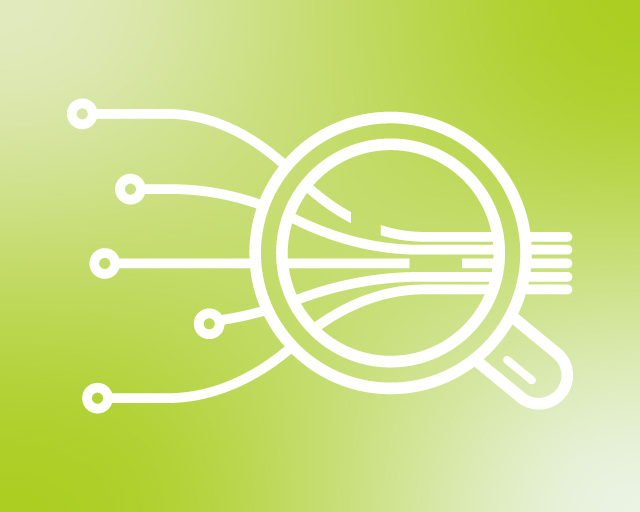By examining digital fingerprints of patients, digital data breaks, data continuity, workflow integration, interoperability, and proprietary data of the used software tools become apparent. SODIAPH relies on the expertise of the Fraunhofer Institutes IZI, IPA, and IESE and aims to achieve a significant improvement of digital patient pathways in the area of outpatient and clinical care structures as well as emergency departments. In particular, the findings on digital data discontinuities and continuity allow recommendations for action to be derived with regard to efficiency and quality in the pathways for decision-makers, software producers, IT service providers, diagnostic laboratories, and medical device manufacturers, as well as the Fraunhofer Center and institutes.
SODIAPH provides a data acquisition instrument for the software tools used, with which the data exchanged along the pathways can be recorded. This creates a holistic picture of the degree of digitization during patient treatment. SODIAPH also enables a benchmark of the digitization level of outpatient and clinical care structures in rural areas. Furthermore, requirements for data integration, workflow integration and interoperability in clinical workflows and future data structures are formulated.
To this end, genome analyses that exhibit a high degree of digitization will be tested and adapted with regard to integrability by means of visionary diagnostic tools in patient pathways.
Contribution to the mission of the Fraunhofer Center for Digital Diagnostics
While the three programs of the center differ primarily in solutions and technologies for the acquisition of diagnostic parameters, they converge in the further steps of a digital diagnostic value added, of the data digital provision and of the intelligent data interpretation. To enable this value addition, interoperability among existing software solutions and in turn their interoperability with new solutions is essential. Within the Fraunhofer Center for Digital Diagnostics, the SODIAPH project is building the necessary competencies to analyze existing health IT landscapes, to develop solutions for the interoperability of isolated solutions, and to ensure the connectivity of new digital diagnostic solutions. These competencies will be made available to healthcare providers as well as external customers in the field of digital health and health IT within the scope of consulting services.
Vision
The aspired gain in knowledge about the digital fingerprint of patients enables a significant improvement of patient paths in the direction of individual medicine in the area of outpatient and clinical care structures. At the same time, it allows a relevant increase in the digital networking of patients' electronic records, including all diagnostics and decision-making processes, which in turn sustainably optimize the care of persons requiring treatment, especially in rural areas. In order to map digital paths in the future, identify data breaks and wasted resources, and provide recommendations for action to further develop the IT system landscape, the solutions developed are to be transferred into a permanent Fraunhofer service offering.
